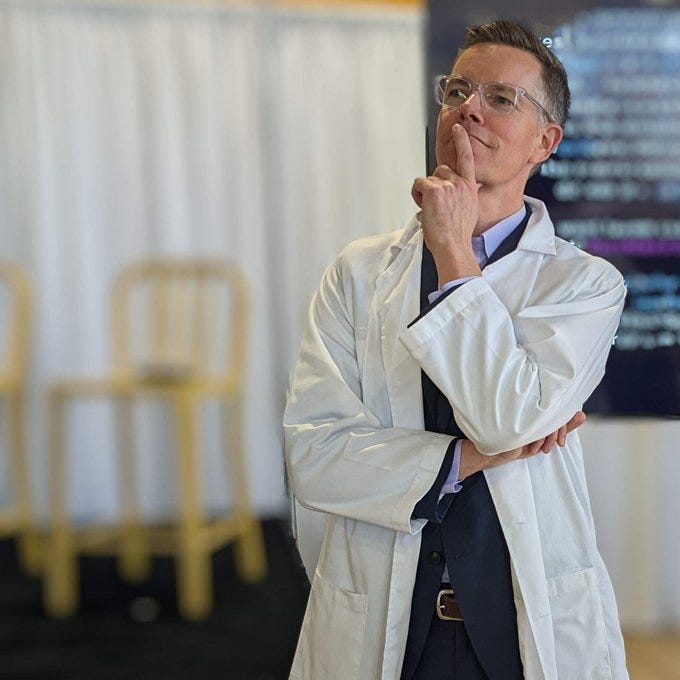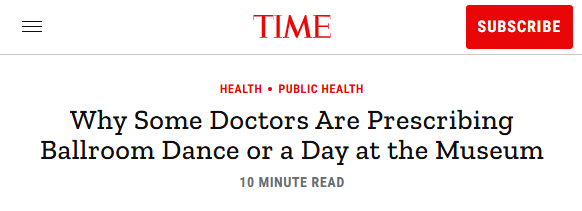The doctor will see you now (on the sidewalk)
Prescriptions for Americans health crisis include walking and riding bikes.
I have a lab coat as an “I’m not really joking” prop for events where I speak about the links between health and infrastructure. It’s a reminder that anytime my work improves the built environment, I’m basically a doctor, handing out prescriptions for healthy living.
Several years ago I read about a doctor prescribing walks to his patients who weren’t happy with their anti-anxiety medications. It turns out there’s a growing movement among open-minded health professions.
It took two years and nearly 50 emergency-room visits for Dr. Ardeshir Hashmi to realize he didn’t need to prescribe pills for his 93-year-old patient’s excruciating chest pains. He needed to prescribe ballroom dance.
Social prescribing is a way for healthcare professionals to prescribe non-medical interventions to patients to improve their health and well-being. These interventions can include activities such as exercise classes, art therapy, and community gardening. It starts by recognizing people’s wellness is determined mostly by a range of social, economic, and environmental factors.
I suppose I define it as anything that the patient and the link worker think will help get them to a better place.
—Dr. Michael Dixon, Chair, College of Medicine and Integrated Health
Of course doctors have some thoughts about active living:
Helps in the treatment of many diseases including depression, cardiovascular disease, diabetes, and arthritis. (Harvard Medical School)
Improves brain health and the ability to think, reduces the risk of anxiety and depression, improves sleep and overall quality of life. (U.S. Dept of Health & Human Services)
Lack of physical activity can lead to more visits to the doctor, more hospitalizations, and more use of medicines for a variety of illnesses. (National Institute of Health)
It’s interesting that NIH says Americans would pop fewer pills if they were more active.
Obviously, exercise is good for the physical body. But it can also boost your mood, improve your sleep, and help you deal with depression, anxiety, and stress. There’s a growing amount of research giving insight about the connection between physical activity and depression, anxiety, PTSD, ADHD, stress, and a bunch of other mental health issues people struggle with.
When local regulations force all our land uses to be spread across creation, people have to work hard to incorporate healthy choices like using a bicycle to get around.
Both the American Planning Association and Institute of Transportation Engineers have formal programs about the links between health and infrastructure. Arguably, they’ve had little effect, but they do exist. It’s a starting point to demonstrate how ideas like social prescribing can be incorporated into infrastructure planning and design. Status quo professional organizations are saying the right things, so let’s help them follow through.
Doctors can prescribe healthy activities like walking or riding bikes. Planners and engineers can prescribe walk-friendly, bike-friendly infrastructure. It’s absolutely possible to build communities where healthy choices are easy choices.




Put the fries in the bag
Put the fries in the bag